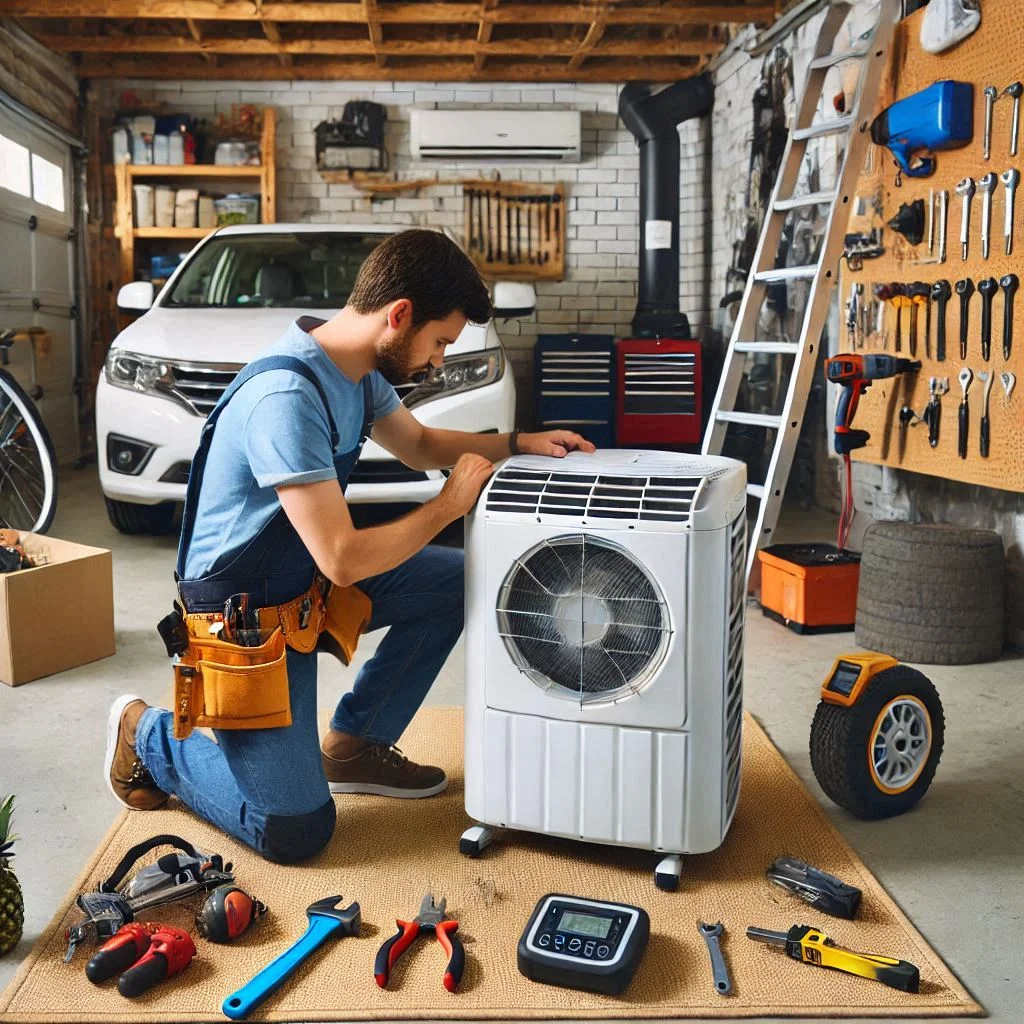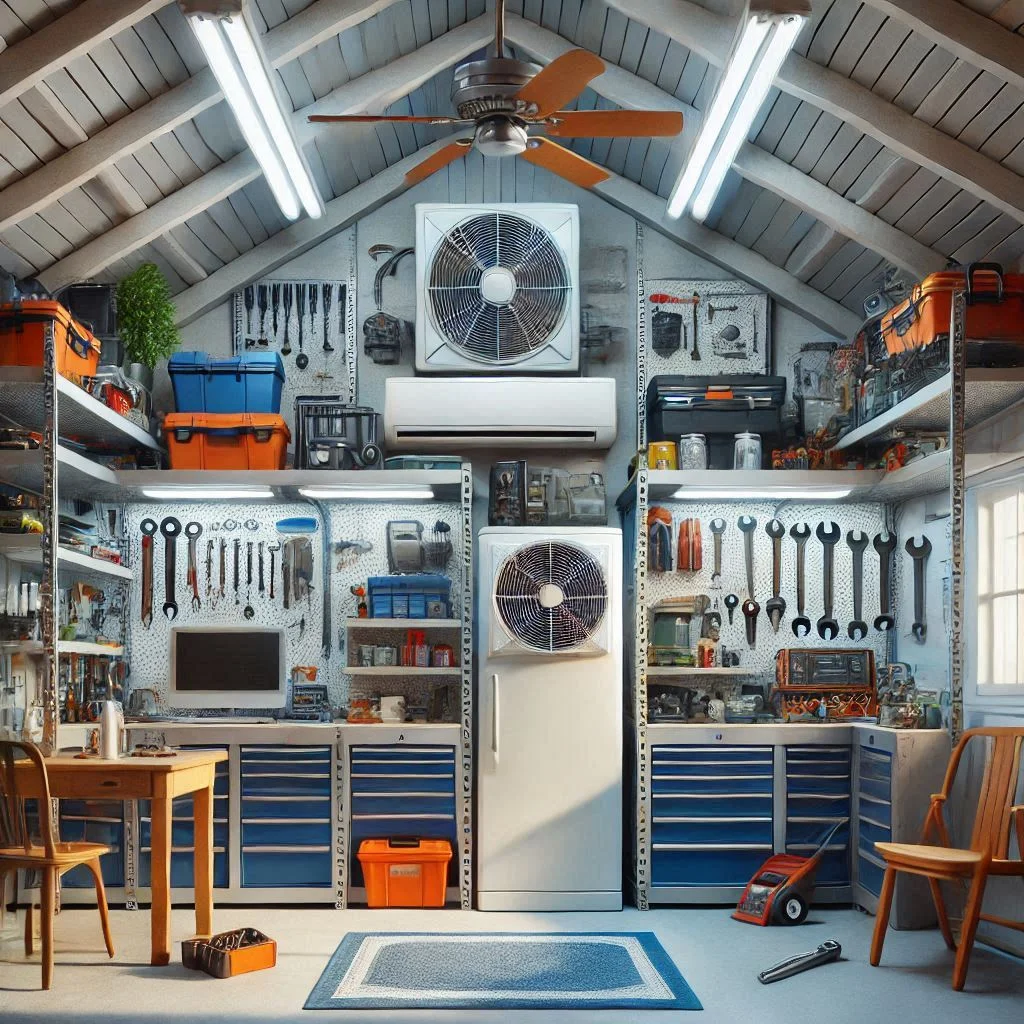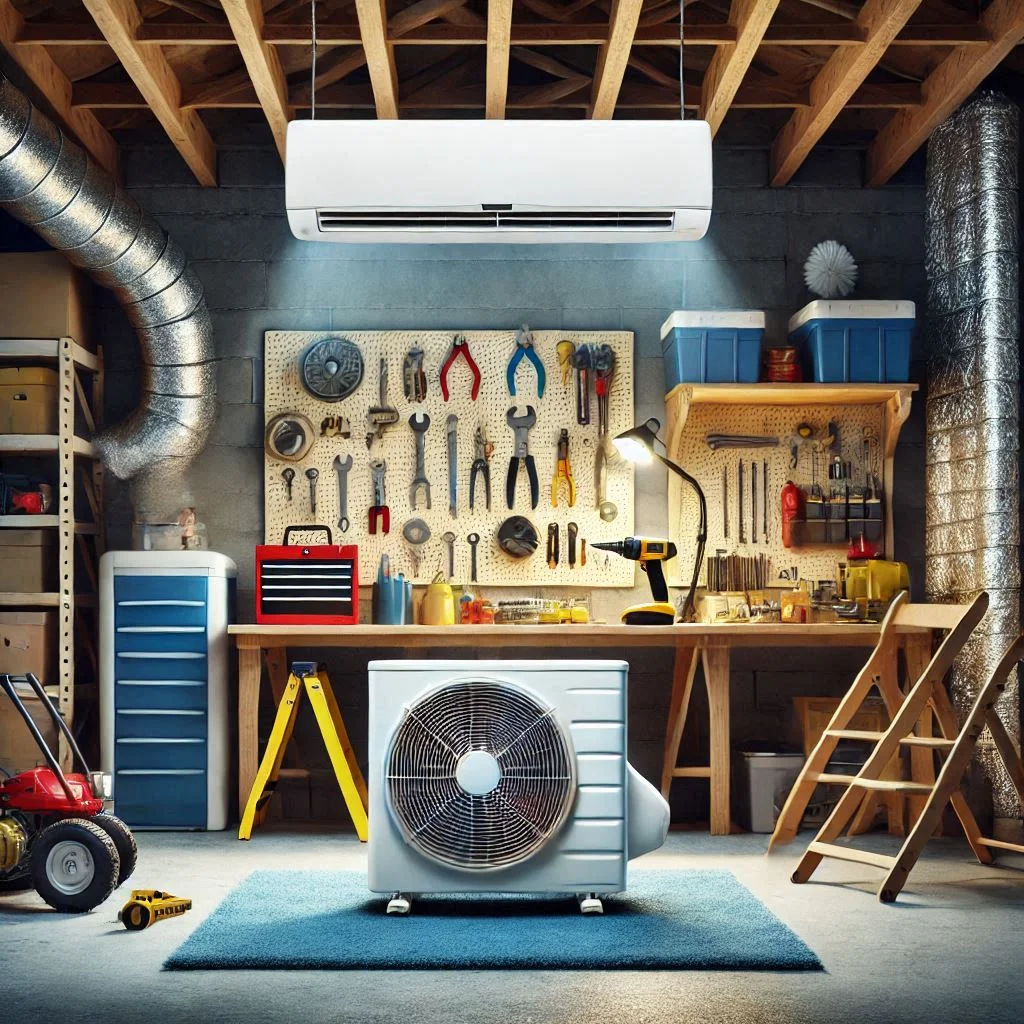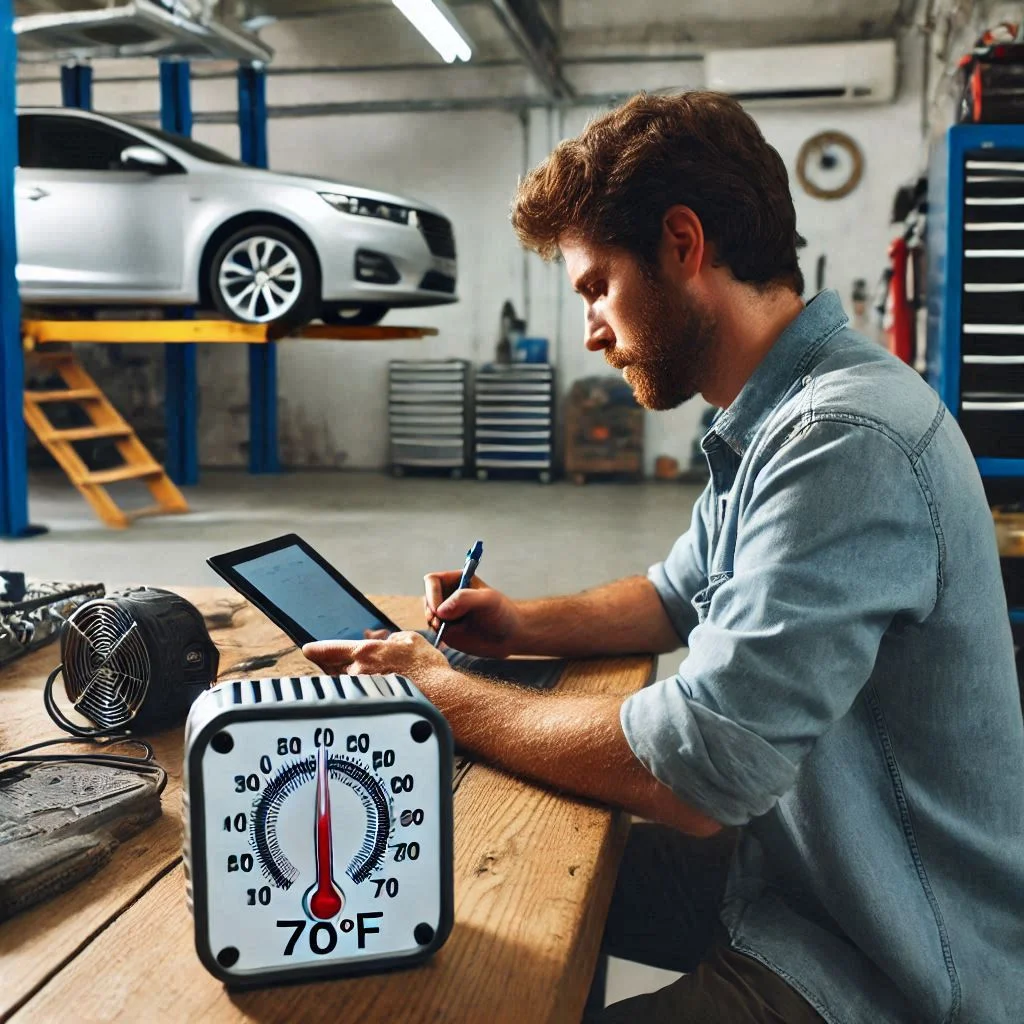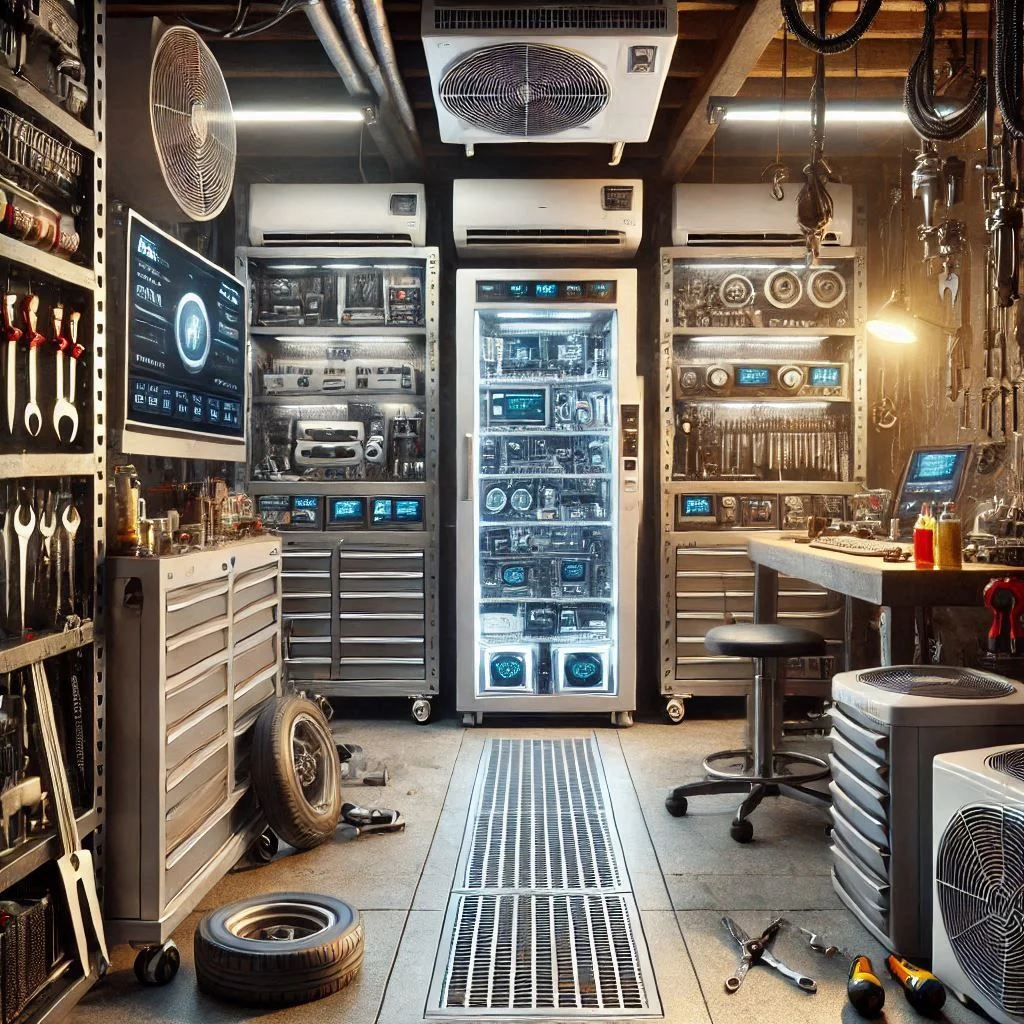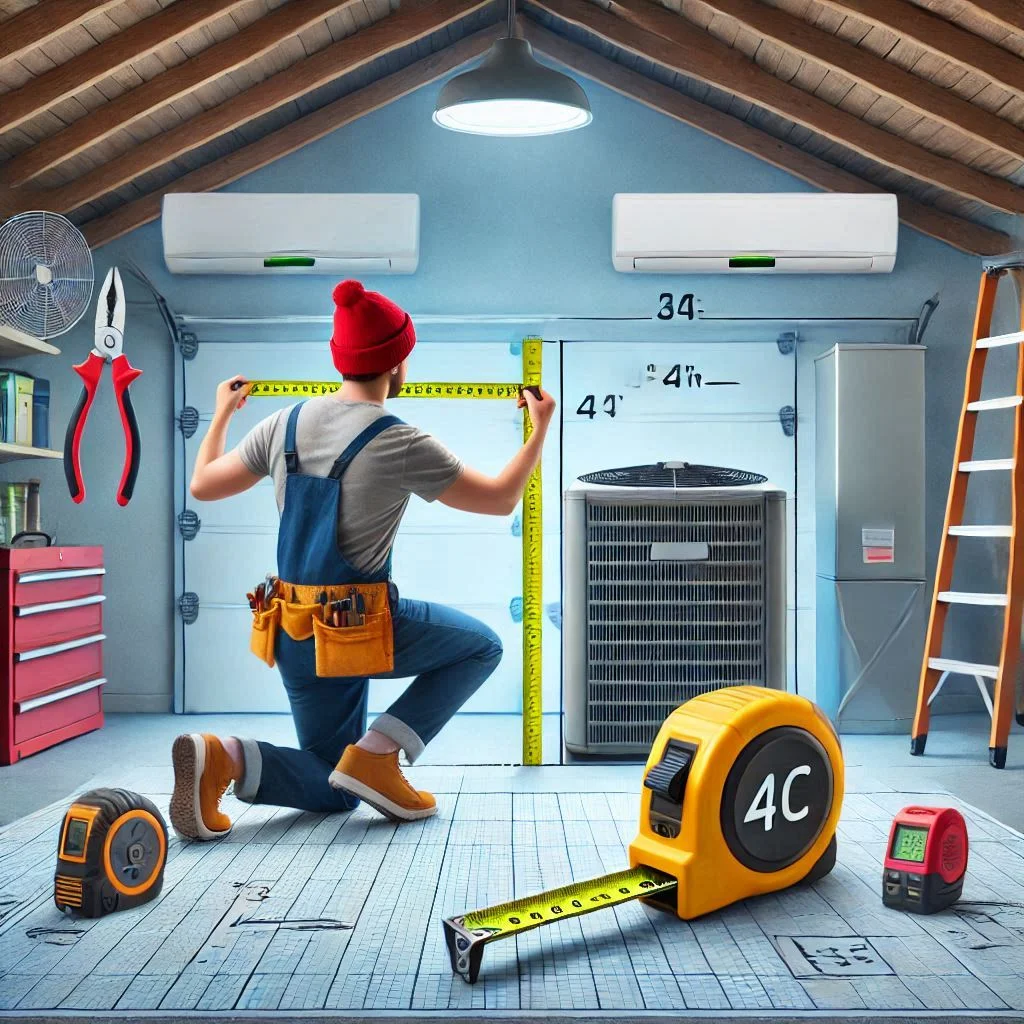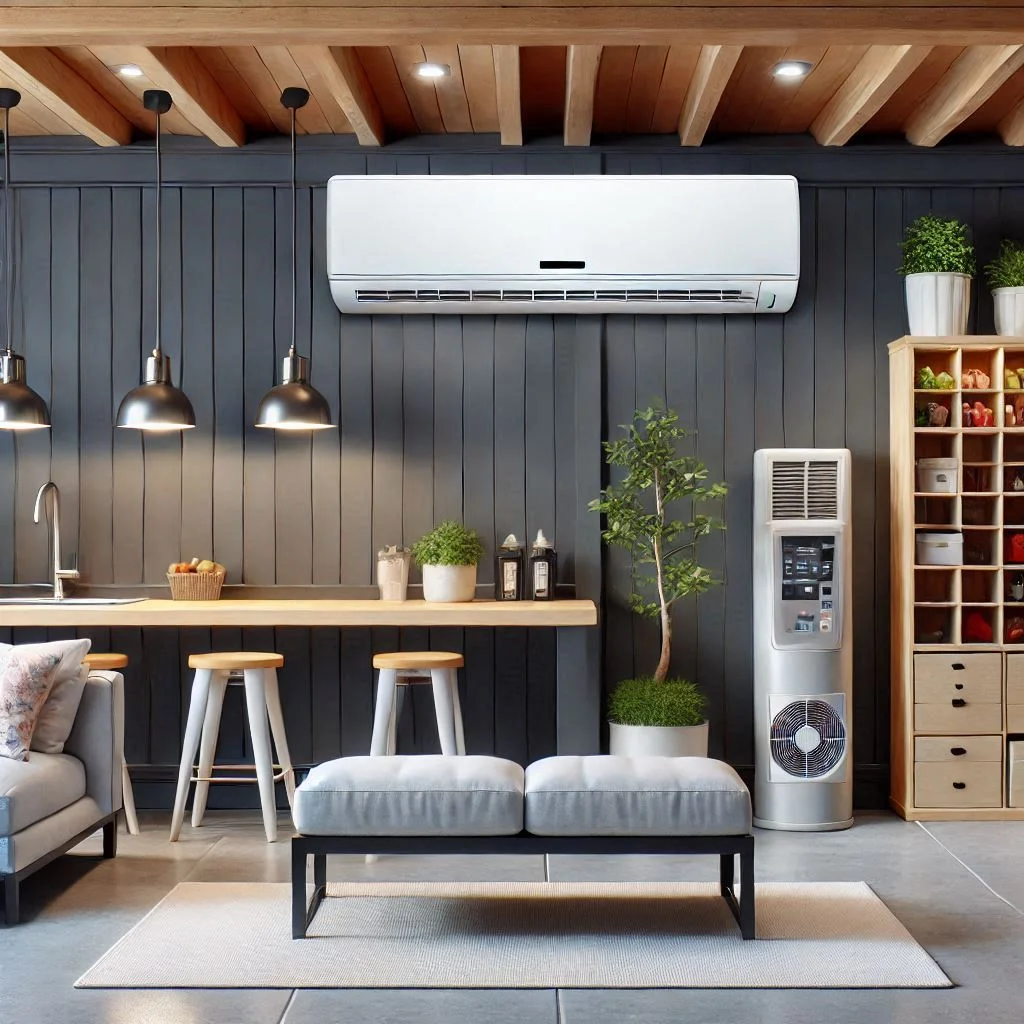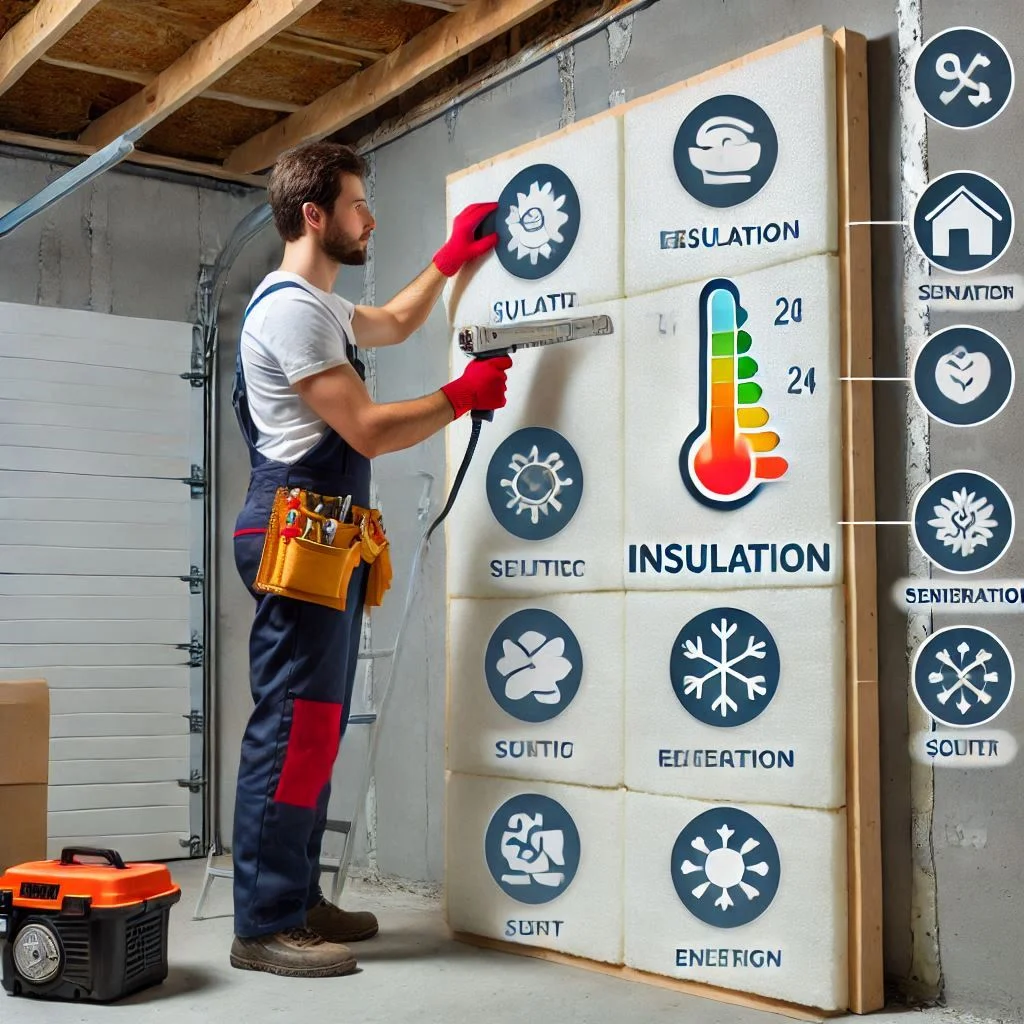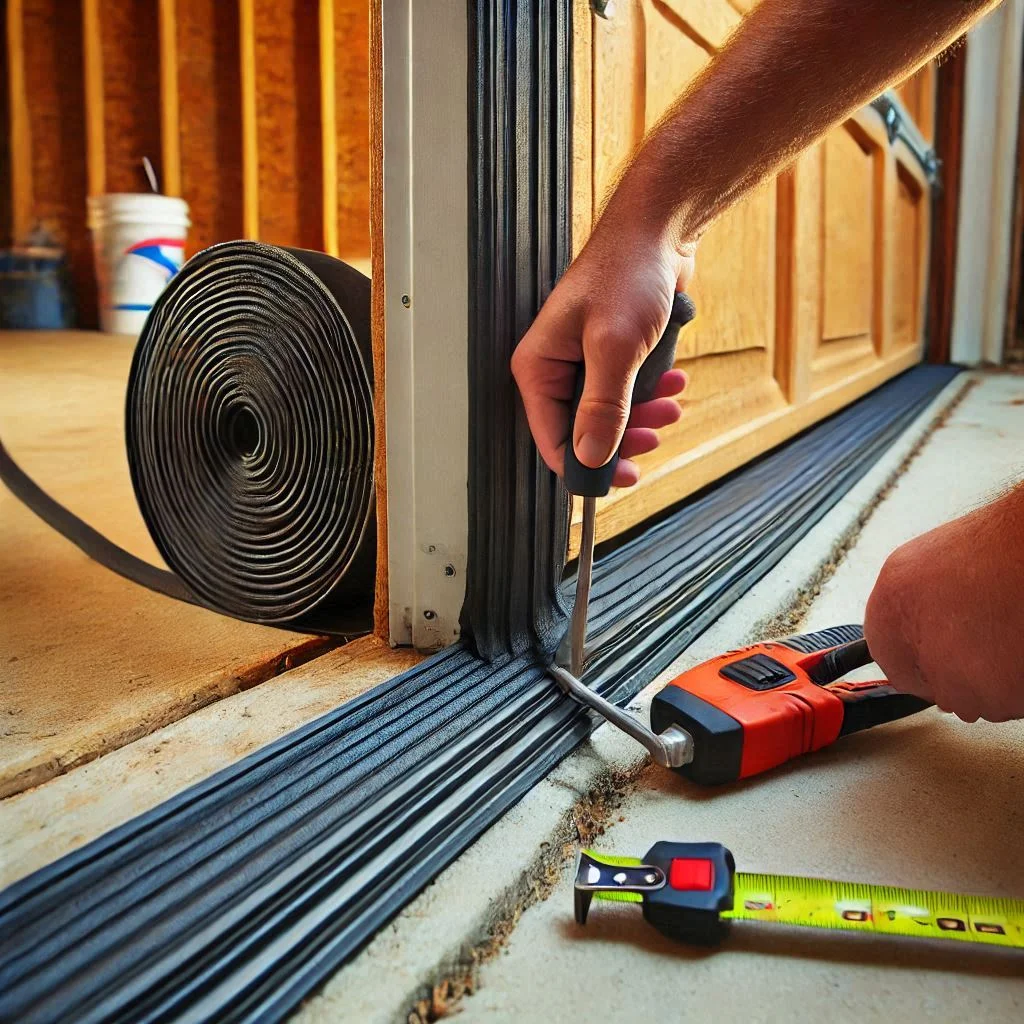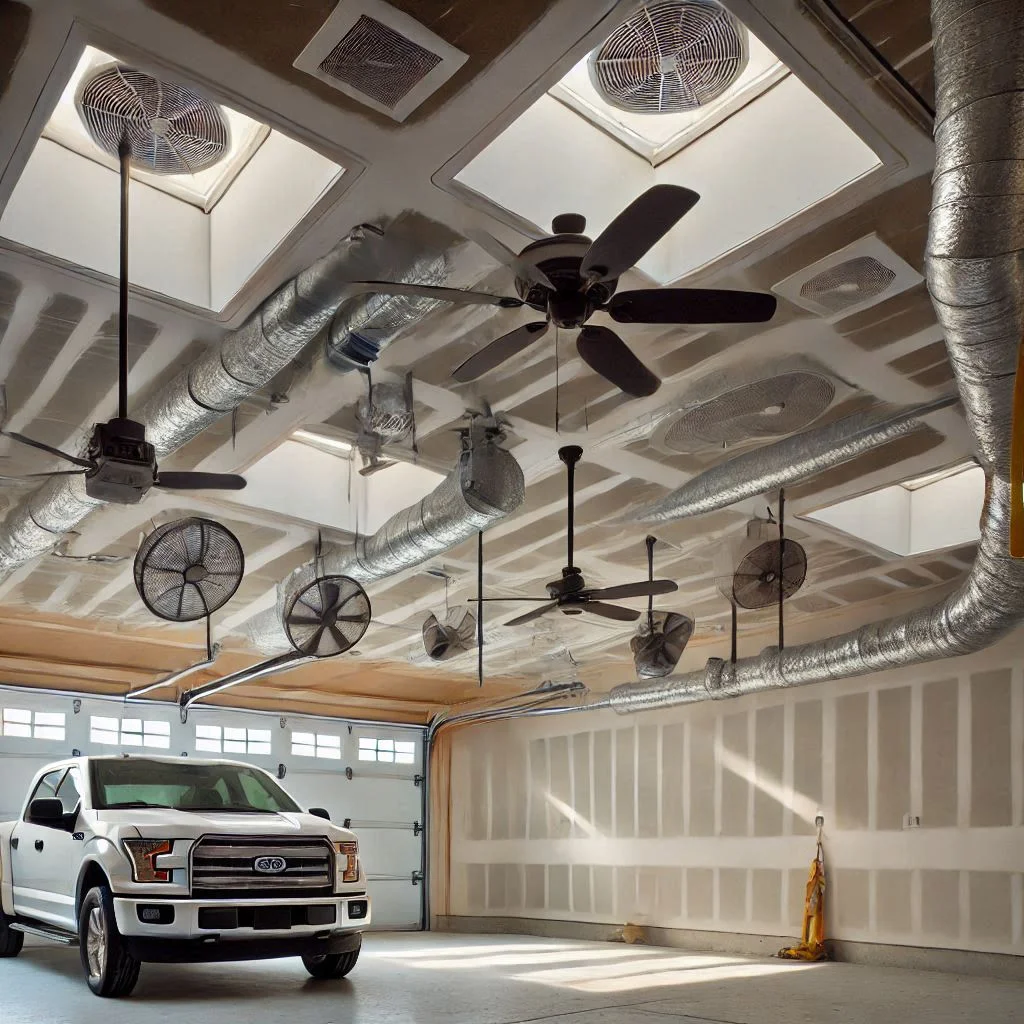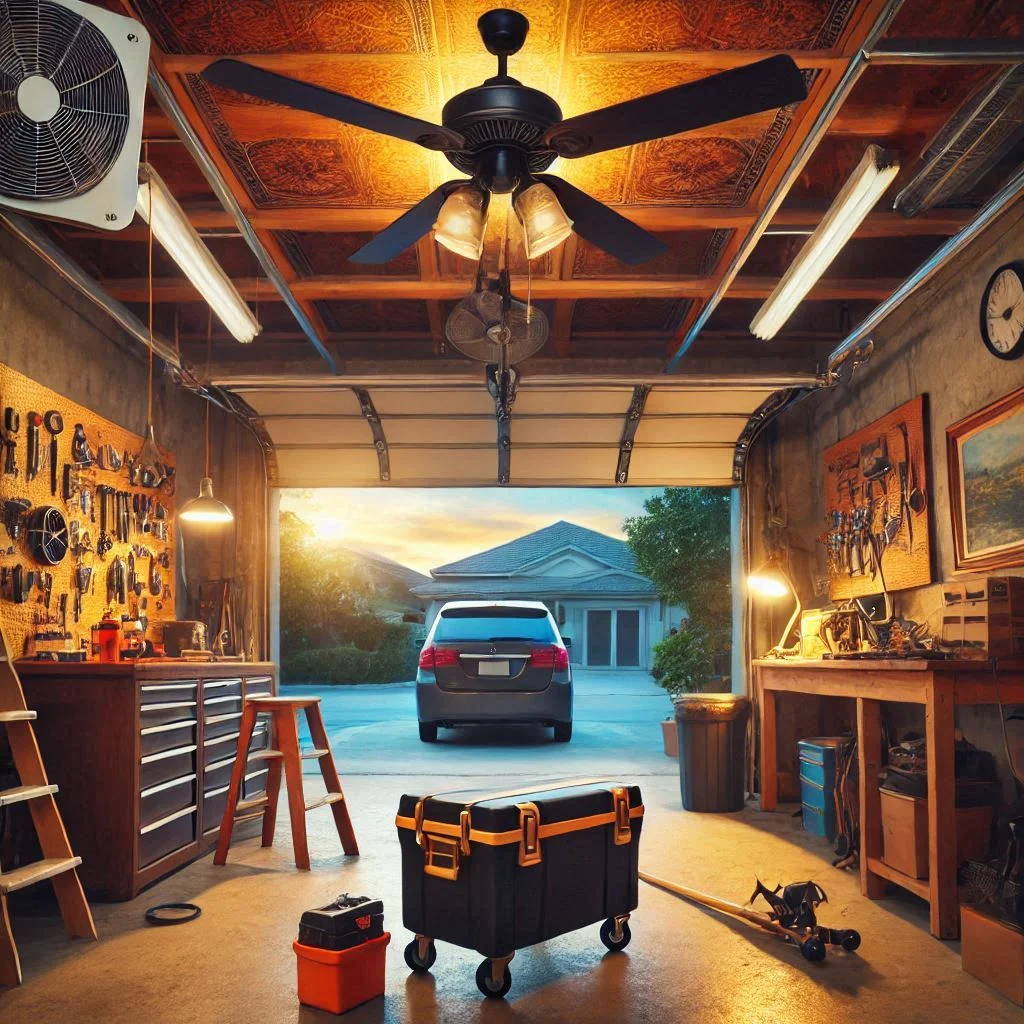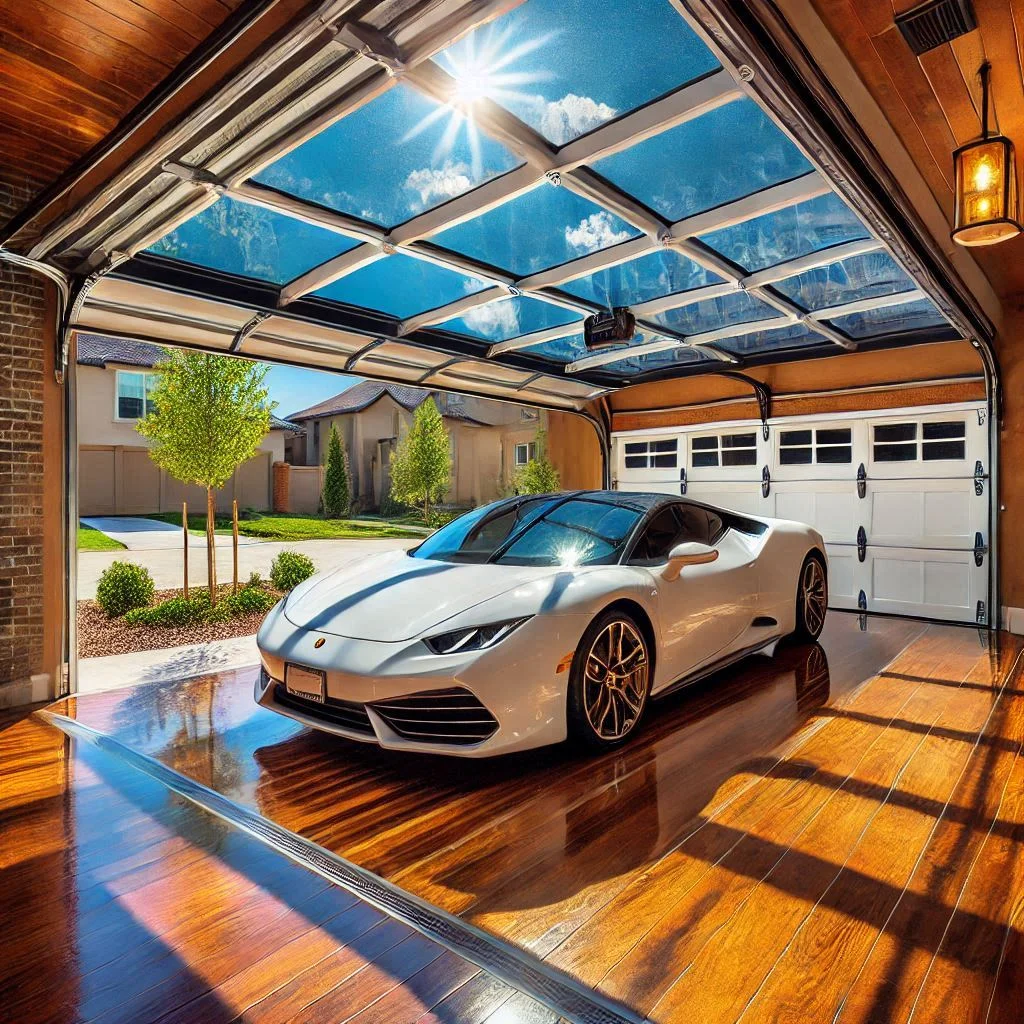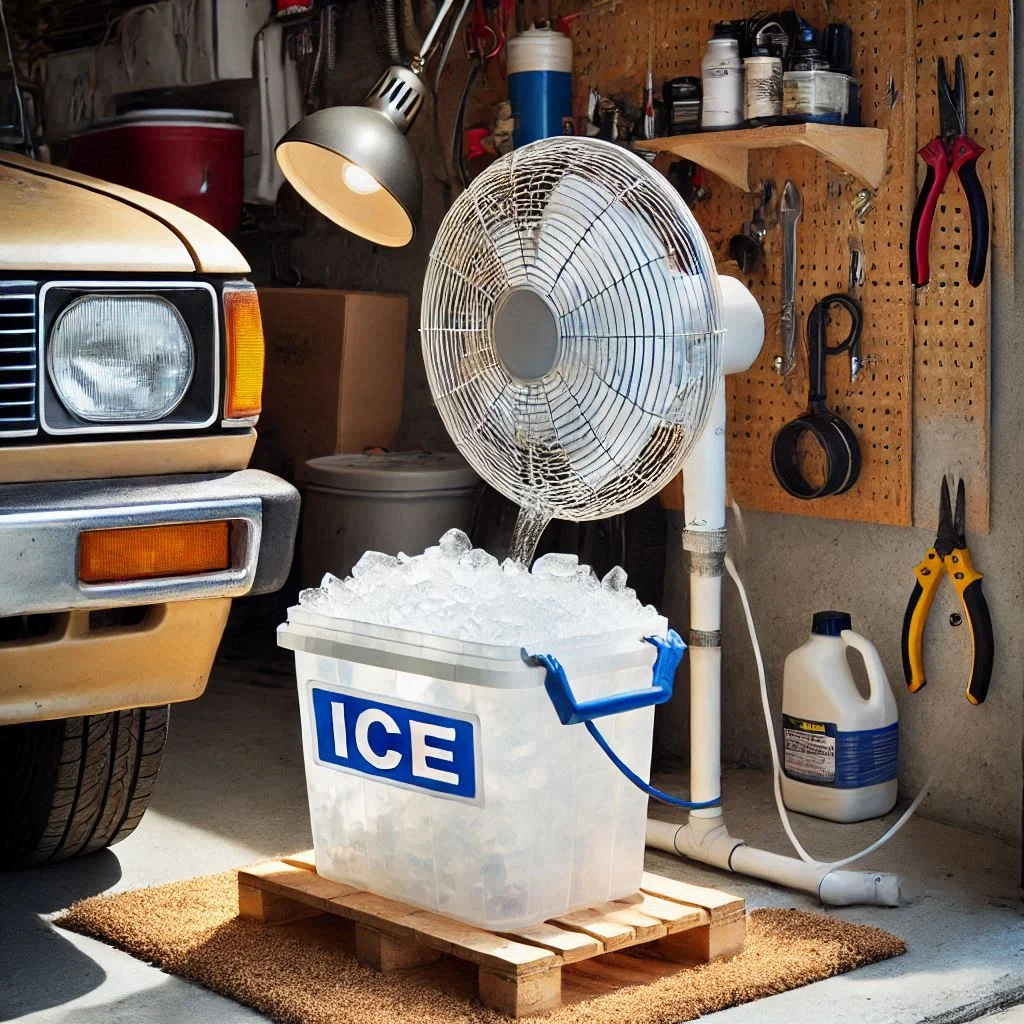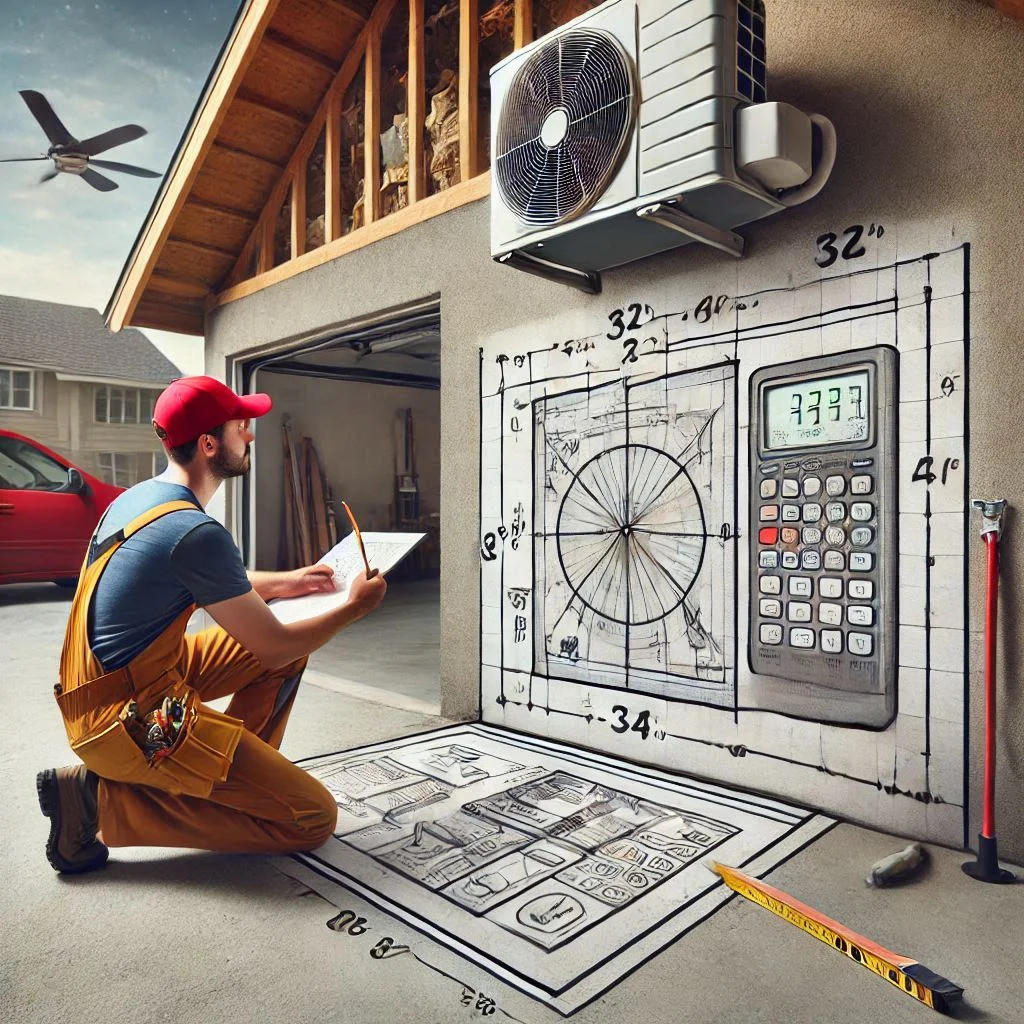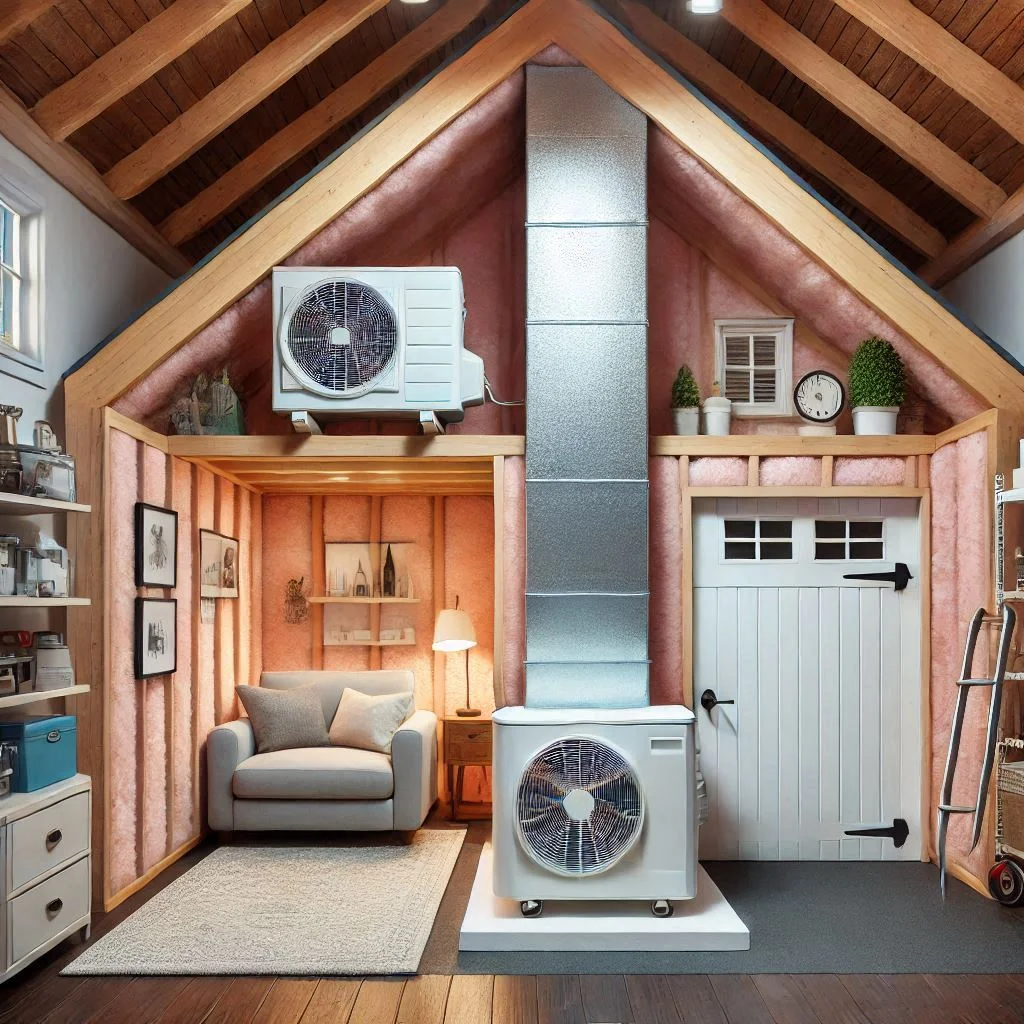Introduction to DIY Air Conditioning Options for Your Garage
Working in a hot garage can be uncomfortable, especially during summer. If you’re looking for an affordable way to cool your space, a DIY garage air conditioner is the perfect solution. Whether you need a temporary cooling method or a long-term setup, there are several creative and budget-friendly ways to lower the temperature in your garage. In this guide, we’ll explore simple DIY cooling solutions to help you stay comfortable while working in your garage.
When you think about DIY air conditioning solutions, several options come to mind: portable AC units, window AC units, mini-split systems, and ductless systems. Each of these systems can be installed with varying degrees of complexity, depending on the size of your garage and your budget. DIY air conditioning is particularly beneficial for those who want to avoid expensive professional installations and prefer to take control of their cooling system.
Key Benefits of Air Conditioning Your Garage
- Comfort
One of the most obvious reasons to install a DIY garage air conditioning system is comfort. During the summer months, garages can become unbearably hot, reaching temperatures that make them difficult or unsafe to work in. By installing an air conditioning system, you’ll be able to maintain a pleasant temperature inside your garage, regardless of the weather outside. This comfort translates into increased productivity, as you won’t have to take frequent breaks to cool down or escape the heat. - Protecting Valuables
Garages often store valuable items, including tools, equipment, electronics, and even important documents. Extreme heat can cause these items to degrade or become damaged over time. For instance, heat can warp wood, cause rusting on metal tools, and degrade plastic or rubber components. An air-conditioned garage will maintain a steady, moderate temperature, helping to protect your valuable belongings from heat damage. - Enhanced Workspace Usability
Whether you’re using your garage for hobbies, repairs, or as a home gym, air conditioning makes the space more usable. You’ll find it easier to concentrate on your tasks without being distracted by the oppressive heat. A cooler environment also makes the garage a more pleasant place to spend time, which encourages more productivity and creativity. - Reducing Humidity
In areas with high humidity, a DIY garage air conditioning system can help regulate the moisture level inside the garage. Excess humidity can lead to mold growth, rusting of tools, and damage to stored items. By running an AC unit, you can reduce moisture in the air, preventing these problems and keeping your garage environment dry and safe.
By following these simple yet effective methods for air conditioning your garage, you’ll not only be improving your own comfort but also protecting your investment in the items stored there. Additionally, with proper insulation and the right AC unit, the cost of maintaining a comfortable temperature can be minimal, especially compared to the benefits.
Now that you understand the importance of cooling your garage, it’s time to dive into the different air conditioning solutions available and how you can choose the right one for your needs.
Why DIY Garage Air Conditioning is a Smart Solution
If you’re considering air conditioning your garage, you’re already on the right path to improving both the functionality and comfort of your space. DIY garage air conditioning offers several advantages that not only enhance the overall environment but also contribute to better long-term maintenance of your tools, equipment, and the garage itself. Let’s take a deeper look at why DIY air conditioning is a smart solution for your garage.
Comfort: Stay Cool During Hot Summer Days
In the scorching heat of summer, garages can transform into an oven, reaching temperatures that are not only uncomfortable but sometimes dangerous. A typical garage without air conditioning can easily exceed 100°F (38°C), which can make it impossible to spend time in the space for extended periods. DIY garage air conditioning solutions, such as portable AC units or window units, provide an affordable and efficient way to maintain a comfortable temperature year-round.
Whether you’re working on a project, using your garage as a gym, or simply storing your car, having a cool, comfortable environment allows you to focus on your tasks without the constant distraction of heat. Additionally, maintaining comfort in your garage can improve your health by reducing the risk of heatstroke, dehydration, and other heat-related illnesses.
Protecting Valuables: Avoid Damage to Tools and Equipment
Garages often serve as storage areas for valuable tools, equipment, electronics, and even important documents. Extreme heat can cause serious damage to these items over time. For example:
- Tools: Excessive heat can cause rusting on metal tools, compromising their functionality and lifespan.
- Electronics: Devices like power tools, computers, and other electronics can overheat or degrade when exposed to excessive heat, leading to costly replacements.
- Paint, Wood, and Other Materials: Some materials can warp, crack, or lose their quality when exposed to extreme temperatures.
By installing a DIY air conditioning system, you create a controlled environment that protects your valuables. Properly regulating the temperature ensures that your equipment remains in top condition, saving you money on repairs or replacements in the long run.
Enhance Workspace Usability: A Cooler Environment for Productivity
Garages are often used as workshops, home offices, or creative spaces, making it essential to have an environment that encourages productivity and focus. The unbearable heat can make these activities difficult, forcing you to take frequent breaks, drink more water, or even stop working altogether.
A DIY garage air conditioning system creates a cooler and more pleasant workspace, allowing you to maintain your productivity. Whether you’re working on intricate repairs, assembling furniture, or pursuing a hobby, having a climate-controlled environment ensures that you stay focused and comfortable. Plus, with an air-conditioned garage, you’re more likely to spend longer periods in the space, getting more work done.
Reduce Humidity: Prevent Mold and Mildew Growth
High humidity levels in your garage can create an environment conducive to mold and mildew growth, which can damage your tools, furniture, and even the structure of your garage. Humidity can also cause the air to feel warmer than it actually is, making it difficult to find relief from the heat.
A DIY garage air conditioner not only cools the space but also helps dehumidify the air, creating a dry and comfortable environment. This is particularly important if you live in areas with high humidity levels, such as coastal regions or during the rainy season. By keeping the humidity levels under control, you prevent mold and mildew from forming, which helps maintain both the integrity of your items and the overall cleanliness of your garage.
Assessing Your Garage’s Cooling Needs for a DIY System
Before choosing the ideal air conditioning system for your garage, it’s crucial to assess its specific cooling needs. Different garages have different requirements based on factors such as square footage, usage frequency, and the temperature sensitivity of stored items. By carefully evaluating these factors, you can select a DIY air conditioning system that efficiently and cost-effectively meets your needs. Let’s explore each of these critical considerations in more detail.
Square Footage Calculation and Its Importance in Selecting the Right System
One of the most important steps in choosing the right DIY garage air conditioning system is understanding the size of your space. The cooling capacity of an AC unit is typically measured in British Thermal Units (BTUs), and the larger the garage, the more BTUs you’ll need. If your garage is large and uninsulated, it will require a more powerful unit compared to a smaller or well-insulated space.
How to Calculate Square Footage
To calculate the square footage of your garage, measure the length and width of the space. Multiply these two numbers to get the total square footage (Length x Width = Square Footage). For example, a 20×20 garage equals 400 square feet.
Choosing the Right BTUs Based on Size
- Up to 300 sq. ft.: 5,000 to 6,000 BTUs (perfect for small garages or single-car garages)
- 300 to 600 sq. ft.: 6,000 to 9,000 BTUs (ideal for medium-sized garages)
- 600 to 1,000 sq. ft.: 9,000 to 12,000 BTUs (suitable for larger two-car or multi-use garages)
It’s important to remember that these are general guidelines, and factors such as the climate in your area, the insulation of your garage, and the number of heat-producing appliances inside may require a slight adjustment to the BTU recommendations.
Usage Frequency: How Often You Use Your Garage and Its Impact on System Choice
The frequency with which you use your garage plays a significant role in determining the type of AC system that will best suit your needs. If your garage is primarily used for storage, a portable AC or window unit might be sufficient. However, if you’re using the space as a workshop, home office, or gym, you’ll likely require a more robust solution to ensure consistent cooling.
Low Usage (Storage-Only Garages)
If your garage is mainly used for storage and isn’t frequently occupied, a portable AC unit or a window AC unit may be the best option. These systems provide sufficient cooling for intermittent use, are energy-efficient, and are easy to install and maintain.
High Usage (Workshops or Living Spaces)
If you spend a lot of time in your garage working on projects, exercising, or using the space for other activities, you’ll need a permanent AC solution like a mini-split or ductless system. These systems are more powerful, energy-efficient, and capable of maintaining a consistent temperature even when the garage is used regularly.
Temperature Sensitivity of Stored Items: Ensuring Your Items Are Safe from Heat Damage
Many garages serve as storage spaces for a variety of valuable items, such as electronics, tools, artwork, and furniture. Extreme heat can cause significant damage to these items over time. For example, heat can warp wood, dry out leather, damage electronic devices, and cause paint to crack or peel.
Heat-Sensitive Items
If your garage contains valuable items that are sensitive to temperature fluctuations, it’s crucial to choose an air conditioning system that maintains a stable, cool environment. In this case, a ductless system or mini-split AC may be ideal, as these systems provide consistent, zoned cooling with a low impact on electricity consumption.
Insulated vs. Non-Insulated Garages
Garages that are well-insulated are better at maintaining a consistent temperature, which helps protect your stored items. Insulation also reduces the burden on your AC system, allowing it to run more efficiently. If your garage is not insulated, you might need a more powerful AC unit to compensate for the heat loss or gain.
DIY Garage Air Conditioning Options
When it comes to cooling your garage, there are various DIY garage air conditioning options available that can cater to different needs and preferences. Whether you’re looking for a flexible, easy-to-install option or a more permanent, energy-efficient solution, there is a system to fit your garage’s unique requirements. Let’s explore the most common DIY air conditioning options in detail.
Portable AC Units: Easy Setup, Flexibility
Portable air conditioners are a popular choice for homeowners looking to cool their garage without committing to a permanent installation. These units are easy to set up and offer the flexibility to move the AC from one area of the garage to another or even to another room in the house when needed.
Advantages of Portable AC Units:
- Easy to Install: Portable AC units require minimal installation. Simply place the unit in a suitable location, connect the exhaust hose to the window or wall, and plug it into a power outlet.
- Portability: These units are ideal for those who may want to cool different areas of the garage or store them away when not in use. This flexibility is especially useful in smaller garages.
- Cost-Effective: Portable AC units are generally less expensive than permanent installations like mini-split systems or ductless systems, making them a budget-friendly option for those on a tight budget.
Considerations:
- Portable AC units are less powerful than their permanent counterparts and may struggle to cool larger spaces or garages with poor insulation.
- They are also slightly noisier due to their compact design.
Window AC Units: A More Permanent Solution for Smaller Garages
Window air conditioning units are another great DIY solution for garages, especially if you’re looking for something more permanent but still cost-effective. These units are installed directly into a window, providing powerful cooling without taking up valuable floor space.
Advantages of Window AC Units:
- Efficient Cooling: Window AC units are powerful and provide consistent cooling, making them ideal for smaller garages (typically under 400 sq. ft.).
- Permanent Installation: Unlike portable units, window AC units are installed securely in your window, ensuring a stable, long-term cooling solution.
- Energy Efficient: These units use less energy than portable AC units because they are designed for optimal cooling and often have energy-saving modes.
Considerations:
- Window AC units can only be installed in windows, which might not be possible for every garage.
- They may block natural light and ventilation, reducing the airflow into your space.

Mini-Split & Ductless Systems: Efficient and Energy-Saving Options for Larger Spaces
Mini-split and ductless systems are the most efficient and energy-saving DIY options for larger garages. These systems consist of an outdoor compressor and one or more indoor air handlers that can be mounted on the wall or ceiling. They are ideal for cooling large spaces while providing superior control over the temperature.
Advantages of Mini-Split and Ductless Systems:
- Highly Efficient: Mini-split systems are some of the most energy-efficient air conditioning options available, as they don’t require ducts, which can lose energy. They also allow for zoning, meaning you can control the temperature in different areas of the garage independently.
- Quiet Operation: These systems operate quietly, which is especially important if you use your garage as a workshop or office.
- Ideal for Large Garages: Mini-split systems are perfect for larger garages, often over 400 sq. ft., and are able to maintain consistent temperatures throughout the space.
Considerations:
- Higher Upfront Costs: The initial cost of mini-split and ductless systems is higher than portable or window AC units. However, the energy savings in the long run can make them a cost-effective option.
- Installation Complexity: While DIY installation is possible, professional installation is recommended to ensure proper setup and optimal performance.
Combining Portable Solutions for Enhanced Cooling
In some cases, a single cooling unit may not be enough to achieve optimal comfort in your garage. Combining multiple portable AC units or combining a portable unit with fans or dehumidifiers can enhance the cooling effect and increase air circulation.
Advantages of Combining Solutions:
- Enhanced Cooling: Using more than one portable AC unit allows you to cool different areas of your garage more effectively, especially in larger or multi-functional spaces.
- Customization: You can experiment with different combinations of portable units and fans to find the cooling solution that works best for your garage.
- Dehumidification: Adding a dehumidifier to the mix helps reduce moisture levels, making the air feel cooler and preventing mold growth.
Considerations:
- Combining units may increase the total cost, both for purchasing the units and for the electricity required to run multiple systems.
- It may take a bit more time and effort to manage and maintain multiple units compared to a single permanent solution.
Insulation and Ventilation: Key to Efficient DIY Air Conditioning
Proper insulation and ventilation are essential components of a highly efficient DIY garage air conditioning system. Even the best AC units can struggle to maintain a cool temperature if your garage isn’t properly insulated or if airflow is restricted. By ensuring that your garage is properly sealed and well-ventilated, you’ll enhance the performance of your AC system, reduce energy consumption, and create a comfortable environment year-round. Let’s break down the key elements that will maximize your garage’s cooling efficiency.
Insulating Your Garage: Types of Insulation for Maximum Cooling Efficiency
Insulation plays a critical role in maintaining a stable temperature within your garage. Without proper insulation, hot air from outside can quickly enter your garage, and cool air from your AC unit can easily escape. This reduces the effectiveness of your air conditioning system and causes your AC to work harder, leading to higher energy bills.
Types of Insulation:
- Foam Board Insulation: Foam board insulation is a rigid material that offers high insulating properties. It’s commonly used for walls and ceilings and can be installed easily in both new and existing garages. Foam board insulation is excellent for blocking heat transfer and is an affordable option for DIY projects.
- Fiberglass Batt Insulation: This traditional form of insulation is made from fibers of glass and is ideal for garage walls and ceilings. Fiberglass batt insulation is cost-effective and works well in moderately sized garages. However, it requires a vapor barrier to prevent moisture accumulation.
- Reflective Insulation: Reflective or radiant barrier insulation is particularly useful in hot climates. It reflects heat away from the garage, preventing it from entering and keeping the inside cooler. This type of insulation is typically installed in the attic or roof of the garage.
- Spray Foam Insulation: Spray foam insulation is highly effective in sealing gaps and providing both insulation and air sealing. It expands to fill cracks and crevices, creating a tight barrier that helps keep your garage cool in the summer and warm in the winter. It’s more expensive but offers long-term benefits in terms of energy savings and comfort.
How Insulation Improves AC Efficiency:
- Temperature Regulation: Proper insulation keeps the interior of your garage cooler in the summer and warmer in the winter. This helps your air conditioner maintain a consistent temperature, making it easier to cool your space without overworking the system.
- Energy Savings: Well-insulated garages reduce the load on your air conditioning unit, cutting down on energy consumption and lowering electricity bills.
- Noise Reduction: Insulation also helps reduce the sound from the outside and within the garage, providing a quieter environment, especially when using tools or equipment.
Weather Stripping and Garage Door Insulation: Preventing Air Leaks
Even with proper wall insulation, your garage may still experience temperature fluctuations due to air leaks around doors and windows. These leaks can let in hot air, making it harder for your DIY air conditioning system to maintain a cool environment. Weather stripping and garage door insulation are key solutions to prevent these air leaks and ensure that your cooling system works efficiently.
Weather Stripping:
Weather stripping is a simple and cost-effective method to seal gaps around doors and windows. By applying weather stripping around the edges of your garage door and other windows, you can prevent hot air from entering your garage and cool air from escaping. This helps reduce your AC’s workload and improves cooling efficiency.
Garage Door Insulation:
A significant amount of heat can enter or escape through an uninsulated garage door. To prevent this, you can install garage door insulation kits, which typically consist of reflective insulation material or foam panels that attach to the inside of the door. Insulating your garage door not only improves cooling efficiency but also helps in soundproofing and providing better thermal resistance.
How Weather Stripping and Garage Door Insulation Benefit Your AC:
- Energy Efficiency: Sealing air leaks with weather stripping and insulating the garage door can reduce the need for your air conditioner to run continuously, saving you money on energy costs.
- Improved Comfort: By preventing hot air infiltration and cold air loss, your garage will stay cooler for longer, improving the overall comfort inside the space.
Ventilation Improvements: How to Optimize Airflow
While insulation helps keep the cool air inside your garage, proper ventilation ensures that the air circulates effectively. Without adequate ventilation, your garage could feel stuffy and uncomfortable, and your air conditioning system may not operate efficiently.
Types of Garage Ventilation Improvements:
- Exhaust Fans: Installing an exhaust fan can help remove hot, stale air from your garage and replace it with cooler outside air. This is particularly beneficial if your garage has poor airflow and is prone to becoming hot and humid.
- Intake Vents: Intake vents allow fresh air to enter your garage, which helps create a continuous airflow. This is especially important if your garage is airtight, as it prevents the air from becoming stagnant.
- Attic Ventilation: If your garage has an attic, improving its ventilation can help release hot air that accumulates in the upper areas of the garage. Adding soffit vents or ridge vents in the attic will allow hot air to escape and help your AC unit work more efficiently.
- Ceiling Fans: Installing ceiling fans in your garage can improve airflow and help distribute the cool air from your AC unit more evenly throughout the space. This also enhances comfort by providing a gentle breeze that prevents air from becoming too still.
How Ventilation Enhances Cooling Efficiency:
- Airflow Optimization: Proper ventilation allows the cool air from your AC unit to circulate more effectively, ensuring that your entire garage stays cool.
- Humidity Control: Improved airflow helps reduce moisture buildup, which can otherwise cause mold, mildew, and other moisture-related issues in the garage.
- Energy Efficiency: Well-ventilated garages require less cooling power from your air conditioning system, which reduces energy consumption and lowers cooling costs.
Top Tips and Tricks for Enhancing Your DIY Garage Air Conditioner
While installing a DIY garage air conditioning system is an excellent way to cool down your space, there are additional steps you can take to maximize your AC unit’s efficiency and enhance overall comfort. Simple strategies, such as using fans for air circulation, blocking direct sunlight, and employing DIY cooling hacks, can make a significant difference in how effectively your air conditioner cools your garage. Let’s explore these top tips to optimize your DIY garage air conditioning system.
Use of Fans to Improve Air Circulation
One of the simplest and most effective ways to enhance your DIY garage air conditioning system is by using fans to improve airflow. Air circulation plays a crucial role in maintaining a consistent and cool temperature inside the garage. By ensuring that cool air from your AC unit is distributed evenly and that hot air is expelled, you can optimize the cooling process without overworking your air conditioner.
Types of Fans to Use:
- Ceiling Fans: Installing a ceiling fan in your garage helps keep air circulating throughout the room. A ceiling fan works by moving the cool air down to where you need it, preventing air from becoming stagnant and ensuring that the entire garage remains comfortable.
- Box Fans: Box fans are portable and affordable, making them a great option for enhancing airflow in a DIY air conditioning setup. By strategically placing box fans near windows or doors, you can help expel hot air and bring in cooler air from outside.
- Oscillating Fans: Oscillating fans are perfect for distributing air evenly throughout a garage. These fans rotate back and forth, ensuring that all areas of the garage benefit from the cool air.
- Exhaust Fans: In combination with your AC unit, an exhaust fan can help expel warm, humid air from your garage. This helps to create a continuous airflow and prevents the buildup of heat and moisture, making the environment cooler and more comfortable.
How Fans Enhance Air Conditioning Efficiency:
- Better Air Distribution: Fans ensure that the cool air from your AC unit reaches all corners of the garage, keeping the temperature consistent and comfortable.
- Improved Comfort: Fans increase air movement, which helps reduce the sensation of stickiness and makes the space feel cooler, even if the temperature remains the same.
- Energy Efficiency: By improving air circulation, fans can help your air conditioning system work less, saving energy and reducing electricity costs.
Blocking Direct Sunlight: Simple Ways to Reduce Garage Heat
One of the primary sources of heat in a garage comes from direct sunlight entering through windows and the garage door. The sun’s rays can heat up the space quickly, making it harder for your DIY air conditioning system to maintain a cool temperature. By blocking direct sunlight, you can significantly reduce the heat entering your garage and reduce the strain on your air conditioning system.
Effective Ways to Block Sunlight:
- Window Tinting: Applying window tint film is a simple and cost-effective way to reduce the amount of sunlight entering your garage. Window tint can block UV rays, reducing heat buildup inside the garage while still allowing natural light to filter through.
- Reflective Window Film: Another option is reflective window film, which works by reflecting the sun’s rays away from your garage. This helps keep the interior cooler and more comfortable without blocking the view.
- Garage Door Insulation: Installing reflective insulation on your garage door can block a significant amount of heat from the sun. Insulated garage doors are designed to reflect sunlight, preventing it from warming up the garage interior.
- External Shades and Awnings: Installing shades or awnings outside your garage windows can effectively block the sun’s direct rays and reduce the amount of heat that enters. These external barriers can be especially effective for south- or west-facing garages that receive the most sunlight throughout the day.
- Use of Light-Colored Paint: Light-colored paint on walls, ceilings, and floors can also help reduce heat absorption. Lighter colors reflect sunlight, helping keep the garage cooler.
How Blocking Sunlight Enhances Air Conditioning Efficiency:
- Heat Reduction: Blocking sunlight helps reduce the amount of heat entering the garage, which means your AC unit won’t have to work as hard to cool the space.
- Lower Cooling Costs: By preventing excess heat from entering the garage, you reduce the overall energy load on your air conditioning system, which can result in lower electricity bills.
- More Comfortable Environment: Reducing direct sunlight keeps your garage cooler and more comfortable, allowing you to work or relax in the space without feeling overwhelmed by heat.
DIY Cooling Hacks for More Affordable Solutions
While installing a professional DIY air conditioning system is a great investment, there are several low-cost DIY cooling hacks you can implement to enhance the effectiveness of your cooling system. These affordable solutions can help you cool down your garage without spending a fortune on high-tech equipment.
Affordable DIY Cooling Hacks:
- DIY Evaporative Cooler: One of the most effective DIY cooling hacks is to create an evaporative cooler using a fan and a large container of ice or cold water. Simply place the fan in front of the container and let it blow air across the cold water. As the air passes over the cold surface, it will pick up moisture, lowering the temperature in your garage.
- Cross-Ventilation: If your garage has multiple windows, take advantage of cross-ventilation. Open windows on opposite sides of the garage to allow cooler air to flow through the space, pushing out hot air. This can help lower the temperature significantly, especially in the early morning or evening when temperatures outside are cooler.
- DIY Cooling Curtains: Hang reflective cooling curtains or thermal drapes on the windows to block out sunlight and reduce heat absorption. These curtains can also help retain cool air inside the garage, further reducing the need for air conditioning.
- Use of Ice Packs: Another inexpensive trick is to place ice packs or frozen water bottles near the fan. The fan will circulate the cool air around the room, lowering the overall temperature in your garage.
How DIY Hacks Improve Cooling Efficiency:
- Cost Savings: These DIY cooling hacks are affordable and can reduce the need for expensive air conditioning units or high-energy fans.
- Enhanced Comfort: Simple tricks like DIY coolers or cross-ventilation help make your garage more comfortable, especially in extreme heat.
- Reduced Energy Usage: By incorporating low-cost DIY solutions, you reduce the workload on your AC unit, leading to energy savings and a more sustainable cooling solution.
Frequently Asked Questions About DIY Garage Air Conditioning
When it comes to installing a DIY air conditioning system in your garage, there are a lot of questions that arise. Whether you are wondering about the size of the air conditioner you need, the feasibility of using a regular home AC unit, or how to maintain your DIY system, we’ve got you covered. Below, we address the most frequently asked questions about DIY garage air conditioning systems to ensure that you make informed decisions.
What Size Air Conditioner Do I Need for My Garage?
Determining the correct size of your air conditioner is crucial for ensuring that it efficiently cools your garage without wasting energy or leaving the space uncomfortable. The size of the air conditioner is typically measured in BTUs (British Thermal Units), and choosing the right size depends on several factors:
Key Factors to Consider:
- Garage Square Footage: The first step in choosing the right size AC unit is to measure the square footage of your garage. Larger garages require more powerful units to cool the space effectively.
- Up to 200 sq. ft.: A 5,000 to 6,000 BTU unit should suffice.
- 200 to 400 sq. ft.: Opt for a 7,000 to 8,000 BTU unit.
- 400 to 600 sq. ft.: A 10,000 to 12,000 BTU unit would be ideal.
- Over 600 sq. ft.: Consider a 12,000 to 14,000 BTU or larger unit.
- Garage Insulation: A well-insulated garage retains cool air more efficiently, meaning you can use a slightly smaller AC unit. Poor insulation may require a more powerful unit to maintain the desired temperature.
- Climate: The climate in your area plays a major role. In hotter climates, you may need a larger unit to handle the extreme temperatures.
- Garage Usage: If your garage is used for heavy activities like woodworking or is home to heat-sensitive equipment, you may need a higher-capacity AC unit.
How to Calculate BTUs:
To calculate the necessary BTUs for your garage, a general rule of thumb is to multiply the square footage of your garage by 20-25 for standard rooms and adjust based on other factors like insulation and usage.
Can I Use a Regular Home AC Unit in My Garage?
While it might seem convenient to use a regular home air conditioner in your garage, it is important to consider a few factors before doing so. Home AC units, such as central air systems or window units, can sometimes be used in garages, but there are limitations to be aware of.
Challenges of Using a Regular Home AC Unit in a Garage:
- Power Requirements: Many home AC units are designed to operate in living spaces, where they can rely on standard power outlets and electrical systems. Garages may not always be equipped to handle the power demands of larger units, especially if the garage is not pre-wired for heavy-duty equipment.
- Limited Cooling Capacity: Home AC units are typically designed for smaller, more insulated spaces, not for large, poorly insulated areas like garages. They may struggle to cool the space effectively, especially during extreme heat.
- Ventilation Issues: Many home AC units require proper ventilation to expel hot air. Garages often lack the ventilation needed to ensure proper airflow, which can cause the unit to overheat and malfunction.
When Is It Suitable to Use a Home AC Unit?
- Small Garages: If your garage is smaller (around 200-300 square feet) and you can provide adequate insulation and ventilation, using a window AC unit or portable unit might work.
- Temporary Cooling: For occasional cooling, a regular home unit can suffice, especially if you only need to cool the garage during specific activities.
Considerations for Best Performance:
If you do choose to use a regular home AC unit, ensure that the unit is rated for the garage’s size and that the space is well-insulated and ventilated. This will improve the effectiveness and longevity of the system.
How Do I Maintain My DIY Garage Air Conditioning System?
Proper maintenance is essential for ensuring the longevity and efficiency of your DIY garage air conditioning system. Regular upkeep can save you from costly repairs and ensure that your unit is operating at its peak performance.
Essential Maintenance Tasks for DIY Garage AC Systems:
- Clean or Replace Filters Regularly: Air filters trap dust and debris, which can clog the system and reduce its efficiency. Make sure to clean or replace the filters every 1-3 months, depending on usage.
- Check the Coils: Both the evaporator and condenser coils need to be cleaned regularly. Over time, dust and dirt can accumulate on the coils, hindering their ability to absorb and release heat effectively.
- Inspect the Insulation: Check the insulation around ducts and pipes for wear and tear. Damaged insulation can lead to cool air loss and reduce the system’s efficiency.
- Clear the Drain Line: Air conditioning systems often have a condensate drain line that removes excess moisture. If the line becomes clogged, it can lead to water damage and affect the system’s performance.
- Schedule Professional Checkups: While DIY maintenance is essential, it’s also a good idea to have a professional HVAC technician inspect your system annually to ensure it’s working correctly and efficiently.
- Monitor Refrigerant Levels: If your air conditioner uses refrigerant, make sure it’s at the proper levels. Low refrigerant can cause the system to overheat or stop working entirely.
How Maintenance Improves Performance:
- Improved Efficiency: Regular maintenance helps your AC system run smoothly, ensuring it cools your garage effectively without wasting energy.
- Prolonged Lifespan: Proper upkeep can extend the life of your system, preventing early breakdowns and expensive repairs.
- Consistent Cooling: By maintaining the system, you’ll ensure that your garage stays cool and comfortable all year long.
Conclusion
In conclusion, installing a DIY air conditioning system in your garage can significantly enhance comfort, protect your valuables, and improve the overall functionality of the space. By carefully assessing your garage’s cooling needs, selecting the right AC system, and ensuring proper insulation and ventilation, you can create an efficient and cost-effective solution. Whether you choose a portable AC unit, window unit, or a more advanced mini-split system, maintaining your system regularly will ensure it continues to perform at its best. With the right approach, your DIY garage air conditioning system will keep your garage cool, dry, and usable year-round, offering a comfortable environment for all your projects and activities.


